The Legend of Zelda: Breath of the Wild is the most ambitious Nintendo game in years
Hylialujah.
Early on in Zelda: Breath of the Wild, you are treated to a sweeping overview of your surroundings. It is a visually stunning moment unlike anything else in the series: a bold statement of intent and an open invitation to explore the vista before you. Fields and forests stretch outwards to the horizon, gently blurring into a painterly haze. Beyond these lie the far-off silhouettes of landmarks such as Hyrule Castle and Death Mountain. See all this space? This is all yours to explore. And beyond that? There's even more.
Breath of the Wild's overworld is twelve times the size of Twilight Princess, series director Eiji Aonuma told a small crowd of press and Nintendo execs on the eve of E3, when Eurogamer went hands-on with the game. Thankfully, unlike Twilight Princess' vast but empty Hyrule Field, each area within this Zelda's map is teeming with treasure to find, quests to complete, and mini-dungeon shrines to tackle. There are more than 100 shrines dotted across the game's giant map, each housing a set of rooms to puzzle through for a prize - a new heart container, perhaps, or a new upgrade, plus the usual dungeon-sized shrines too. There are also countless environmental puzzles to tackle above ground, many of which require Link to manoeuvre himself around with the new jump button (yes, really), paraglider and stamina gauge, the latter of which comes into play when swimming or climbing. Link can now scramble up any surface from trees to sheer stone cliffs, to the bodies of larger enemies. See that giant, ruined cathedral? You can scale that too.
I was never far from a treasure chest or sparkling resource item to tempt me off the beaten track. Not that there is a beaten track. Link's early adventures are laid out in the form of mission quests, accepted from a mysterious old man who appears to help you on your way. But how you complete each quest, and where else you wander to on the way, remains open-ended. You might stumble across a bokoblin encampment, one of the various fortified areas to infiltrate where groups of enemies are based. Each of these outposts is a puzzle in itself. You can charge in and alert all the enemies to your presence, or you can crouch (there's a button for that too) and sneak up on targets.
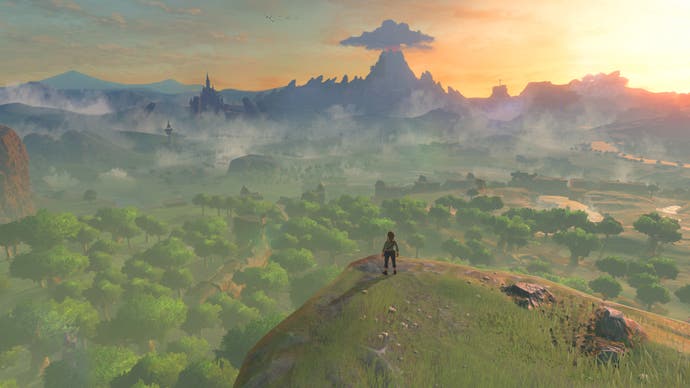
An even larger change sees multiple items and abilities tied to a new iPad-like gadget, the Sheikah Slate, which lets you scroll through and activate a diverse range of uses. Gone is the need for a telescope, replaced by the Slate's scope tool which lets you tag and mark multiple items of interest. Gone too is the need for a bomb bag, as the Slate can call up several types of explosives (rolling and static) generated via Sheikah magic. A magnetic function allows you to pick up or manipulate metallic objects from doors to giant slabs, letting you manipulate the environment around you. And then there's the Amiibo option - but more on that later.
Zelda games are traditionally named after a starring character or central object, but for Breath of the Wild, Aonuma and his team deliberately titled the game to describe its true star. Not only does its world offer far more than any other Zelda, Breath of the Wild's loot and resource system offer far more depth to Link. There's no more slicing grass to gather hearts or rupees. Fruit must be gathered from the boughs of trees, while passing herds of deer or boar handily turn straight into steaks when slain. Other enemies leave behind alternative consumables. Link can cook and combine these resources into hardier meals, potions and elixirs. On top of health regeneration, these can boost Link's attributes to make him speedier or quieter, bestow a temporary boost of health or protect him from the elements. Noise and temperature both factor into how Link reacts to his surroundings, and each has an on-screen gauge. Creep silently enough and you can completely avoid combat, for example - a scenario even more useful at night, when many enemies sleep. Move time forward at a campfire or wait through the day-night cycle (24 minutes equals 24 hours) and you can exploit enemies who act differently at different times.
Venture into the world's snowy mountain region - located right on the edge of the E3 demo area - and you'll quickly succumb to the elements without warmer clothing. Link can now be dressed in a wardrobe of items, each of which brings its own advantages. Wear your thermal attire and you'll be fine - or you can bring along a torch to provide warmth. Weapons are similarly interchangeable, and can be switched between at the flick of the D-pad. There are countless weapons in the game, from rudimentary wooden branches to hefty woodsman's axes, all of which wear out after extended use. But new swords and shields are easy to find - you can nab them off defeated enemies. All of which begs the question of what will happen when you inevitably pick up the Master Sword, or if there is legendary endgame equipment. But, like many aspects of the game, Nintendo is still keeping schtum.
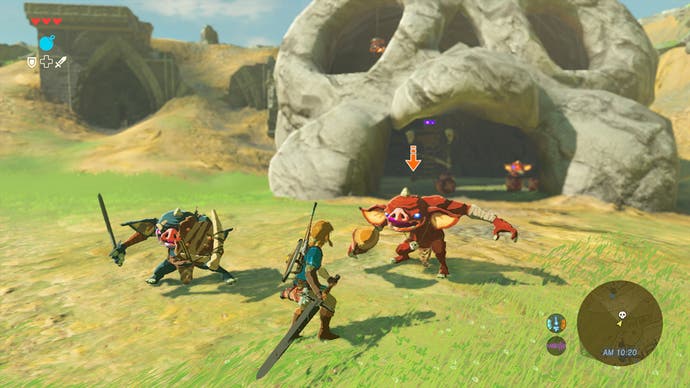
Breath of the Wild begins with a female voice commanding Link to wake from his slumber - a sleep he has remained in for 100 years. The voice appears to originate from within Hyrule Castle, which has fallen under the thrall of Ganondorf once again, although the darkness appears to be contained there. There's nothing to suggest the voice belongs to anyone other than Zelda (despite those rumours of a female Link), but the demo goes no further in providing any context. For reference, no other character in the demo speaks out loud (Link, once again, remains silent) but Nintendo hinted this balance of voiced major characters and text-based dialogue for more minor NPCs would continue throughout the game.
Exactly where this entry fits into the wider Zelda timeline (because, obviously this matters) is also unclear, although Aonuma hinted there were clues in the state of the particular version of Hyrule shown. Once a beautiful kingdom, it has now fallen into ruin. There's a melancholic edge here, born out through the game's moody piano score, even despite its outwardly bright colour palette. Even the Master Sword is rusted with age and nicked with damage. But amongst all the changes, there are clues that this is still a Hyrule which players have already visited. Ancient technology of the type seen in Skyward Sword covers the land, half buried by the ages, and there are references to the Goddess Hylia. From Ocarina of Time and other games, The Temple of Time once again makes an appearance, while the Sheikah appear to be a key part of the game's history. Wind Waker's Korok race is back. And then from Twilight Princess, the Bridge of Eldin, an iconic location also recreated in the Smash Bros. series, still stands - just about.
There's a far larger nod to Twilight Princess via Breath of the Wild's Amiibo system, which sees Twilight Princess HD's Wolf Link figurine conjure up the four-legged Link as a support character. Unlike other games, Link does not have a full-time companion during this adventure, so the ability to bring in support is a major asset. Wolf Link will attack nearby enemies and hunt any local wildlife, and appear with as many hearts as you managed to finish with in Twilight Princess' Cave of Shadows mini-dungeon (or three as standard if you didn't finish it yet). There are other Amiibo, too: Archer Link, the horse-backed Rider Link, and the spider-like Guardian tentacle mech, larger than normal Amiibo and the first with posable arms. I asked Aonuma what these three might unlock. He smiled. "Please look forward to seeing what they do."
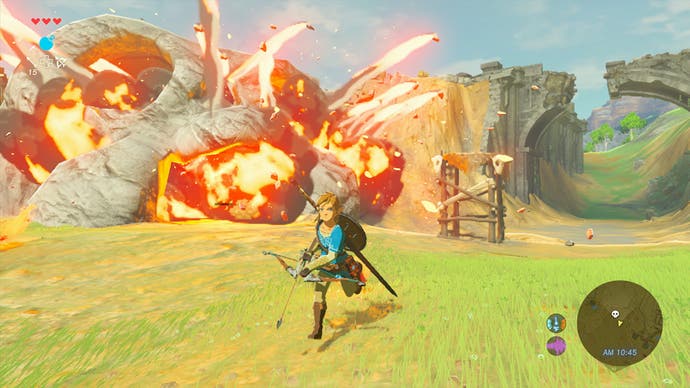
The biggest unknown - and the elephant in the room for Nintendo this year - is the existence of a souped-up Zelda: Breath of the Wild for its next console, NX. But Aonuma did at least suggest that, content-wise, both versions would remain the same. There's even room for standard controls, as the Wii U version supports Pro Controller play.
Much of what I played was mechanically very new for a Zelda game, even if some of the concepts are now common in other RPGs. But the way the game ties so many ideas together in its exploration, in its world design and its various systems - and the way the whole thing looks in action - remains pure Nintendo. Breath of the Wild is the huge Zelda many have wanted since before Twilight Princess, but with a focus on a truly vibrant overworld not seen in that or any Zelda since. The decision to focus on this might have come after feedback on Skyward Sword - a Zelda game whose overworld was largely erased - but the original inspiration for Breath of the Wild harks back far further. As Nintendo Treehouse's Bill Trinen concluded, it's about "going in any direction, entering any dungeon in any order, going into areas I'm not supposed to be in, even if I'm going to get my butt kicked." It comes from the original Zelda on the NES, he said.
It's hard to think of many entries since which have refreshed the series so completely, and with so much style.
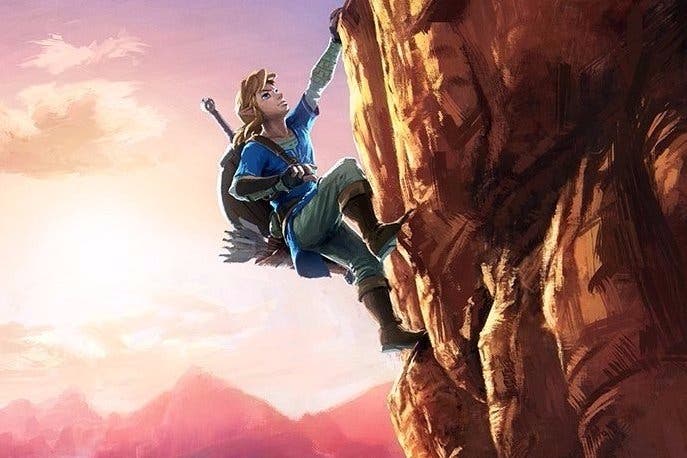



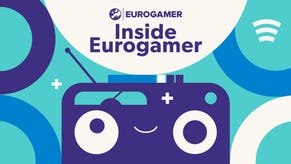



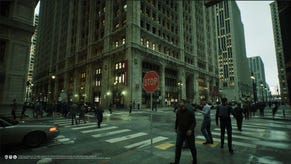
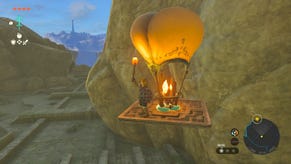

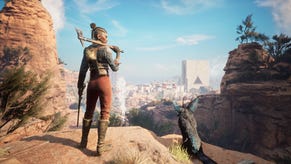



.png?width=291&height=164&fit=crop&quality=80&format=jpg&auto=webp)


